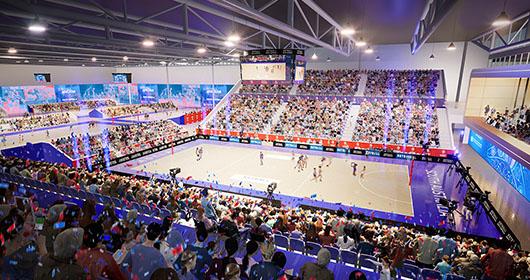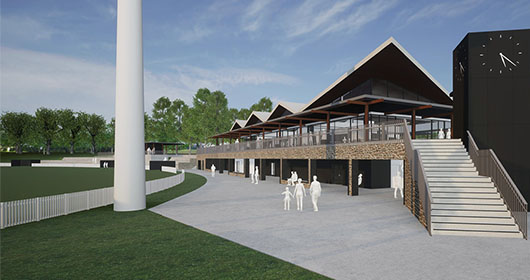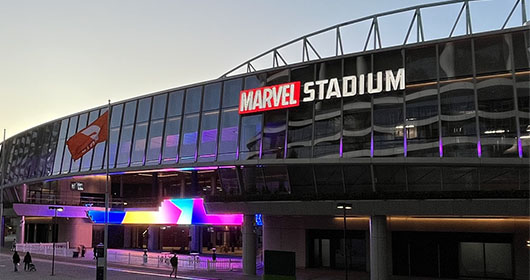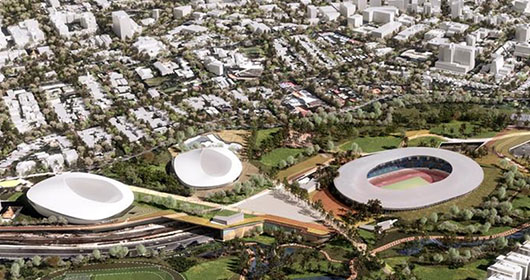20 years on: Sydney’s Olympic stadium legacy lives on

As we celebrate 20 years since the Sydney 2000 Olympic Games, its stadium infrastructure has succeeded where some other host cities have failed, creating a lasting legacy and continuing to host major events.
The 2000 Games provided Sydney’s stadium infrastructure with a much-needed shot in the arm, providing it with world-class facilities that remain in regular use today, highlighted by 640-hectare Sydney Olympic Park at Homebush.
Sydney has been able to avoid the catastrophes that have seen numerous venues in Athens, Rio de Janeiro and even Beijing lay abandoned, left in ruins, in the years following their respective Games’.
Once the site of rolling fields, a slaughterhouse and a brick factory that built half of Sydney, Homebush was transformed from an industrial zone into a precinct fit for the best Olympics ever. The transformation began in the 1980’s with the establishment of the State Sports Centre and the State Hockey Centre. The successful bid fast-tracked the redevelopment of the area, which had been proposed for decades.
Located about 18km from the CBD, the location of Sydney Olympic Park has had its critics for being too far away and at times a white elephant. However, solid transport links have provided reasonable access for events and that is set to improve in the future with the new Sydney West Metro and Paramatta Light Rail to better connect the precinct, while a myriad of large and successful events have been staged within the precinct over the past 20 years.
There are ten former Olympic venues within Sydney Olympic Park that are still in regular use today, including the Aquatic Centre, Archery Centre, Hockey Centre, Tennis Centre, Showground Stadium, Sydney Superdome and Stadium Australia, which alone has welcomed more than 28 million fans through its turnstiles since it opened prior to the Olympics in March 1999.
Today, the park is home to around 60 sporting organisations, while various venues have been expanded and upgraded. Below is a list of every venue used for the Sydney Olympics, both within the Sydney Olympic Park and elsewhere around New South Wales and the rest of Australia.

STADIUM AUSTRALIA
The Olympic Stadium boasted a capacity of 110,000 and was the centrepiece of the Sydney Olympics, hosting the ceremonies, track & field, and football final. Stadium Australia has had a number of renovations since, changing its seating and field configuration. It now seats 83,500 spectators and can host rectangular and oval sports with the use of retractable seating, although it hasn’t hosted an oval sport for a number of years now. As Sydney’s largest stadium, it has hosted many big events including NRL Grand Final’s, State of Origin, Rugby World Cup Final, Asian Cup Final, concerts and countless rugby league, union, football and event cricket and Australian football matches. The venue is often criticised however due to a lack of atmosphere created by sub-par crowds, with regular-season NRL matches rarely drawing in excess of 15,000 spectators. All that was set to change with a major redevelopment proposed to essentially bulldoze the entire seating bowl and rebuild the inside of the stadium to make it a world-class 70,000-capacity rectangular venue. However, the NSW Government abandoned these plans in May 2020, with the project falling victim to the coronavirus pandemic.
SYDNEY INTERNATIONAL AQUATIC CENTRE
The Sydney Olympic Park Aquatic Centre opened in 1994 with a 4,500 capacity. This was expanded to 17,000 for the Olympics and reduced afterwards to 10,000. The venue of many great memories from 2000 when it hosted the swimming, diving and water polo, it holds on to the title as Australia’s largest aquatic centre and continues to host numerous annual meets, and of course casual swimmers.
SYDNEY SUPERDOME
The 18,000-capacity SuperDome (now Qudos Bank Arena) opened in 1999 and hosted the gymnastics and basketball finals. With 8,000 more seats than the now-demolished Entertainment Centre, the venue provided Sydney with a world-class indoor arena for sports & entertainment and remains Australia’s largest, also in the top 10 world-wide for annual attendances. It regularly hosts basketball – home to NBL side Sydney Kings.
SYDNEY INTERNATIONAL TENNIS CENTRE
The SOP Tennis Centre has continued to host the annual Sydney International tournament and now the ATP Cup prior to the Australian Open, and in 2018, Ken Rosewall Arena underwent a significant upgrade. The 10,500-seat venue is now an indoor arena and as well as hosting tennis, is now the home of netball in NSW – home of the Swifts and Giants.
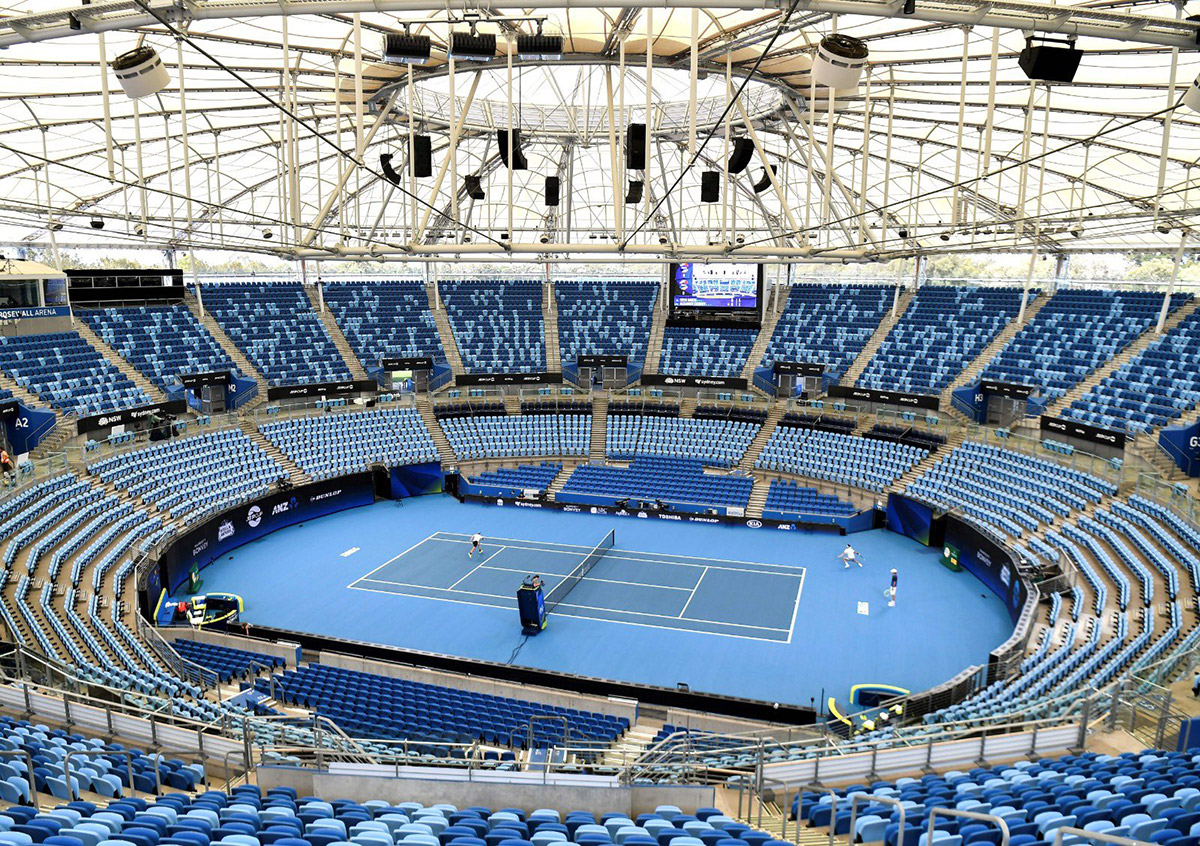
SYDNEY BASEBALL STADIUM
The Baseball Stadium hosted a handful of national league games since its opening in 1998 but was always going to be too large for the sport. It was repurposed as the new Sydney Showground following the Olympics but apart from hosting NRL games for the Bulldogs in 2001, lay mostly vacant until it was redeveloped in 2012 for AFL expansion side, GWS Giants. The 24,000-capacity stadium is also now the home of BBL team Sydney Thunder.
STATE HOCKEY CENTRE
The SOP Hockey Centre opened in 1998, adjacent to the existing hockey pitch built in the 1980’s (now pitch 2). Temporary grandstands boosted the capacity to 15,000 for the Olympics, it now caters for 8,000 spectators and regularly hosts matches and has staged a number of big games and tournaments over the past 20 years.
STATE SPORTS CENTRE
Opened in 1984, the Sports Centre hosted table tennis and taekwondo during the Olympics. Now known as the Quaycentre, the 5,000-capacity indoor arena has hosted countless events over the years and has previously been home of various NBL and Super Netball teams.
THE DOME
The Dome hosted the preliminary rounds for the basketball tournament for the Sydney Olympics, with temporary grandstands giving it a capacity of 10,000. The adjoining exhibition halls also hosted badminton, gymnastics, handball and volleyball. The complex hosts the Royal Sydney Show each year, as well as trade shows and exhibitions.
SYDNEY FOOTBALL STADIUM
The 42,500-capacity Sydney Football Stadium at Moore Park hosted football matches including the women’s final. Since its opening in 1988, the stadium hosted countless events, up until 2018 when it closed and was subsequently demolished. A new world-class rectangular stadium is currently being constructed and is scheduled to open in 2022.
DUNC GRAY VELODROME
The indoor velodrome opened in 1999 and features permanent seating for 3,150, boosted to almost 6,000 for the Olympics. Despite being the only indoor velodrome in NSW, it is probably the venue most at risk, with high operating costs and minimal returns, raising the prospect that it may be demolished, although unlikely.
BLACKTOWN OLYMPIC PARK
Blacktown hosted softball and baseball during the Olympics and both venues continue to host national-level events to this day, including ABL team Sydney Blue Sox at the baseball stadium. In 2000, the softball stadium’s 2,000-seat grandstand and baseball stadium’s 3,000-seat grandstand were complimented by temporary grandstands to boost capacity. Additional facilities have also been developed at the park including the Blacktown International Sportspark Oval.
BONDI BEACH VOLLEYBALL ARENA
The temporary beach volleyball arena was constructed on the world-famous Bondi Beach. The stadium included seating for 10,000 spectators and created an immense atmosphere. The venue was removed immediately following the Olympics and walking past the site today, you would never know it was there.
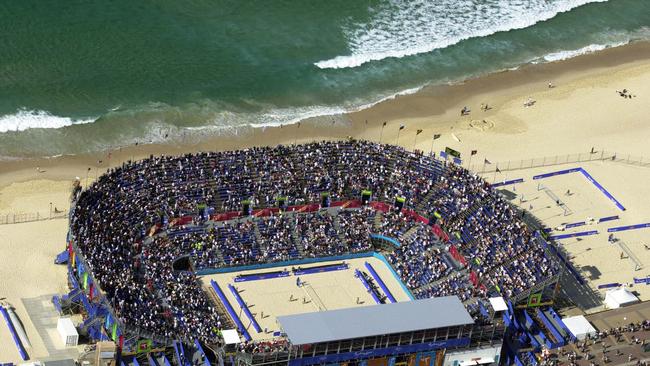
A number of smaller venues were also used for the Olympics and remain in use today, including the Sydney International Archery Park, Sydney International Equestrian Centre, Penrith Whitewater Stadium, Ryde Aquatic Leisure Centre, Sydney International Regatta Centre and the Sydney International Shooting Centre.
Two venues that existed prior to the Olympics and were used during the Games – the Sydney Entertainment Centre (volleyball) and the Sydney Convention and Exhibition Centre (boxing, fencing, judo, weightlifting, wrestling) – have since been demolished, with the new Sydney International Convention Centre now sitting on the site at Darling Harbour.
There were also four existing stadiums used for the football tournament elsewhere around Australia.
MELBOURNE CRICKET GROUND
The iconic MCG was the centrepiece of the Melbourne 1956 Olympics and is Australia’s largest stadium. It hosted the opening game of the football tournament in front of 93,252 fans for the match between Australia and Italy. While the ground didn’t receive any significant upgrades for the Olympics, it has seen had a major redevelopment with the 55,000-capacity northern grandstand and several other upgrades since. More people visit the MCG than any other stadium in Australia each year and it has hosted some major football matches since.
THE GABBA
Interestingly, it was the Gabba that received government funding for a major redevelopment to host football matches in Brisbane during the Olympics. The oval ground is home to AFL and cricket in Queensland. Suncorp Stadium was redeveloped afterwards in 2003 and is now considered one of Australia’s best rectangular stadiums. The Gabba hasn’t hosted a football match since the Olympics in 2000 and is unlikely ever to in the future.
CANBERRA STADIUM
Canberra Stadium (then Bruce Stadium, now GIO Stadium) received a major redevelopment in 1977 for the Olympics and to continue as ACT’s primary rectangular stadium, with the pitch lowered and a lower bowl of seating constructed. It was the home of former-NSL team Canberra Cosmos and there is hope for a future A-League franchise, while it has also hosted A-League and international football matches.
HINDMARSH STADIUM
Adelaide’s Hindmarsh Stadium received a major redevelopment for the Sydney Olympics and the 15,000-capacity venue remains one of the best purpose-built football venues in the country. For the Olympics, temporary grandstands were erected in each corner to boost capacity to 20,000.
The venues used for the Sydney Olympics continue to serve the community 20 years on from the even and Australia has a healthy track record of attracting events to get bums on seats year after year. Next up, it may be Brisbane’s turn, with the Queensland capital set to bid for the 2032 Olympic Games, and with it, a new legacy to create.

